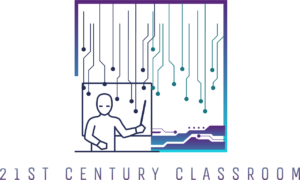In today’s rapidly evolving business landscape, creativity has emerged as a critical differentiator for companies seeking to stay ahead of the curve. As markets become increasingly competitive and consumer demands continue to shift, organizations must harness the power of creativity to foster innovation, drive growth, and adapt to changing circumstances. This blog post explores how successful companies leverage creativity as a competitive advantage and provides insights on building a culture that embraces and nurtures creative thinking.
The Power of Creativity in Business
Creativity is the catalyst for innovation and the driving force behind the success of many companies. Organizations that prioritize creativity consistently outperform their competitors and achieve sustainable growth. For instance, companies like Apple, Tesla, and Netflix have revolutionized their respective industries by continuously pushing the boundaries of creativity. By encouraging employees to think outside the box and explore new possibilities, these companies have introduced groundbreaking products and services, capturing the attention and loyalty of consumers.
Moreover, creativity in the workplace not only fuels innovation but also enhances employee satisfaction and engagement. When individuals have the freedom to express their creativity and contribute to meaningful projects, they become more motivated and invested in their work. This leads to higher levels of productivity, collaboration, and ultimately, success.
Embracing a Creative Culture
To truly harness the power of creativity, organizations must foster a culture that embraces and nurtures it. Leadership plays a crucial role in creating an environment where creativity can flourish. By providing support, resources, and incentives, leaders can inspire and empower their teams to think creatively and take risks. It is essential for leaders to lead by example, encouraging experimentation, and demonstrating a willingness to explore uncharted territories.
Furthermore, organizations can cultivate a creative culture by promoting collaboration and cross-functional communication. By breaking down silos and encouraging diverse perspectives, companies can tap into a wealth of ideas and insights. Embracing diversity and inclusivity allows for a more comprehensive exploration of possibilities and drives innovation.
Thinking Outside the Box: Creative Problem Solving
In today’s complex and fast-paced business world, creative problem-solving is an indispensable skill. By encouraging employees to approach challenges from unconventional angles, organizations can discover unique solutions and gain a competitive edge. Companies like Google and IDEO are known for their innovative problem-solving approaches, which often involve brainstorming, prototyping, and rapid iteration.
To foster creative problem-solving within teams, organizations can implement techniques such as design thinking and encourage a growth mindset. Design thinking involves empathizing with end-users, defining the problem, ideating potential solutions, prototyping, and testing. This iterative process allows for continuous refinement and encourages a creative mindset.
Innovation through Collaboration and Diversity
Creativity thrives in an environment that embraces collaboration and diversity. When individuals with different backgrounds, perspectives, and expertise come together, the potential for innovative ideas increases exponentially. Organizations that actively seek diverse talent and create inclusive work environments benefit from a broader range of insights and experiences, resulting in more innovative solutions.
Companies like Airbnb and Salesforce have successfully leveraged collaboration and diversity to drive innovation. By fostering cross-functional teams and encouraging knowledge-sharing, these organizations have been able to tap into the collective creativity of their workforce and transform industries.
The Role of Technology in Enhancing Creativity
Technology has become an invaluable tool in enhancing and supporting creative processes. It provides a wide range of possibilities for individuals and teams to explore new frontiers and unleash their creative potential. Here are some key aspects to consider:
- Amplifying Creativity: Technology offers a vast array of innovative tools and platforms that aid in creative endeavors. Graphic design software like Adobe Creative Cloud enables artists to bring their ideas to life with precision and ease. Video editing software such as Final Cut Pro and Premiere Pro empower filmmakers to create visually stunning and captivating content. Virtual reality and augmented reality technologies provide immersive experiences that push the boundaries of creativity.
- Collaboration and Communication: Technology facilitates seamless collaboration and communication among creative teams, regardless of their geographical locations. Project management tools like Trello and Asana help streamline workflows and keep everyone on the same page. Virtual meeting platforms like Zoom and Microsoft Teams enable teams to brainstorm and share ideas in real-time, fostering creativity even in remote work settings.
- Accessibility and Efficiency: Technology has democratized creativity by making creative tools and resources more accessible than ever before. Online marketplaces like Etsy and Shopify allow artists and creators to showcase and sell their work globally. Social media platforms like Instagram and YouTube provide a stage for creative individuals to share their talents with a wide audience, potentially leading to collaborations and opportunities.
Despite its numerous benefits, there are also potential drawbacks and challenges associated with technology-driven creativity. It is important to strike a balance and ensure that technology enhances rather than hinders the creative process. Overreliance on technology can sometimes stifle originality and limit human imagination. It is crucial to maintain a balance between utilizing technology as a tool and allowing for the organic flow of creativity.
Nurturing Creativity: Training and Development
To cultivate a culture of creativity within organizations, providing training and development opportunities is essential. Here are some strategies to foster continuous learning and creativity within teams:
- Continuous Learning: Encourage employees to engage in continuous learning and self-improvement by offering access to workshops, seminars, and online courses related to creativity and innovation. By investing in their professional growth, organizations empower employees to stay updated with the latest trends and techniques, fueling their creativity.
- Workshops and Brainstorming Sessions: Conduct regular workshops and brainstorming sessions to encourage the exchange of ideas and stimulate creativity. These sessions provide a platform for employees to collaborate, think critically, and explore innovative solutions. By creating a safe and supportive environment that values all ideas, organizations can inspire individuals to think creatively without fear of judgment.
- Mentorship Programs: Establish mentorship programs where experienced individuals can guide and support aspiring creatives. Mentors can provide valuable insights, share their experiences, and offer constructive feedback, nurturing the growth of creative talent within the organization.
Companies Leading with Creativity
Let’s take a closer look at some successful companies that have made creativity a core part of their business strategy:
- Apple: Apple’s commitment to creativity and innovation has positioned the company as a leader in the tech industry. By combining sleek design, intuitive user interfaces, and seamless integration of hardware and software, Apple has consistently produced groundbreaking products that redefine user experiences. Their emphasis on creativity has resulted in a devoted customer base and a strong market position.
- Nike: Nike is known for its innovative approach to athletic apparel and footwear. The company continuously pushes the boundaries of design, collaborating with athletes and incorporating cutting-edge technologies. Nike’s creative marketing campaigns, such as the “Just Do It” slogan, have resonated with consumers worldwide, establishing the brand as a symbol of inspiration and performance.
- Google: Google’s success can be attributed to its commitment to fostering a creative work environment. The company encourages employees to dedicate a portion of their work time to personal projects, known as “20% time.” This initiative has led to the development of game-changing products like Gmail and Google Maps. By promoting a culture of experimentation and providing resources for innovation, Google has maintained its position as a leading innovator in the tech industry.
Analyzing these case studies, we can draw valuable lessons for other organizations:
- Embrace risk-taking: Successful companies understand that creativity often requires taking calculated risks. Encourage employees to think outside the box, challenge conventions, and pursue innovative ideas.
- Foster a collaborative culture: Collaboration fosters creativity by bringing together diverse perspectives and skill sets. Encourage cross-functional teams and create opportunities for interdisciplinary collaboration.
- Empower employees: Provide the necessary resources, training, and support to enable employees to unleash their creative potential. Foster a culture that values and recognizes creative contributions.
Overcoming Barriers to Creativity
While creativity can be a powerful competitive advantage, several barriers can hinder its expression within organizations. Here are common barriers and strategies to overcome them:
- Fear of failure: Fear of failure can stifle creativity and discourage risk-taking. Foster a safe and supportive environment where employees feel comfortable taking creative risks and learning from failures.
- Lack of time and resources: Creative endeavors require time and resources. Allocate dedicated time for creative thinking and provide the necessary tools, technologies, and training to support employees’ creative pursuits.
- Hierarchical structures: Hierarchical structures can hinder the flow of creative ideas. Encourage open communication, flatten hierarchies, and create platforms for ideas to be shared and heard across all levels of the organization.
- Resistance to change: Creativity often challenges the status quo. Address resistance to change by fostering a culture that embraces innovation, providing clear communication about the benefits of creativity, and involving employees in the decision-making process.
Takeaway
In today’s dynamic business landscape, creativity has emerged as a powerful competitive advantage. Throughout this article, we have explored the key points that highlight the significance of creativity and how companies can leverage it to stay ahead of the curve. Let’s recap these points:
- The Power of Creativity: Creativity fuels innovation, drives growth, and enhances employee engagement. Companies like Apple, Tesla, and Netflix have harnessed the power of creativity to revolutionize their industries and capture consumer loyalty.
- Embracing a Creative Culture: Organizations must foster a culture that values and nurtures creativity. Leadership plays a crucial role in creating an environment that encourages experimentation, collaboration, and diverse perspectives.
- Creative Problem-Solving: By encouraging employees to think outside the box, companies can discover unique solutions and gain a competitive edge. Techniques such as design thinking and a growth mindset facilitate innovative problem-solving.
- Innovation through Collaboration and Diversity: Collaboration and diversity are catalysts for creative thinking. Companies like Airbnb and Salesforce have demonstrated the power of cross-functional teams and inclusive work environments in driving innovation.
- The Role of Technology: Technology amplifies and supports creative processes, but a balance must be struck between its use and human ingenuity. Tools and platforms facilitate collaboration, communication, and accessibility, enhancing creative endeavors.
- Nurturing Creativity: Providing training, workshops, and mentorship programs fosters continuous learning and creativity within teams. Organizations that invest in their employees’ professional growth empower them to contribute creatively.
- Case Studies: Examining successful companies like Apple, Nike, and Google showcases the impact of making creativity a core part of their business strategies. Lessons learned from their experiences can guide other organizations.
- Overcoming Barriers: Common barriers to creativity, such as fear of failure and resistance to change, can be overcome through a supportive and inclusive environment that encourages risk-taking and open communication.
In conclusion, creativity is no longer just a desirable trait; it is a competitive advantage that drives success in today’s business world. By embracing and prioritizing creativity, organizations can foster innovation, engage employees, and adapt to evolving market demands. It is imperative for leaders to create a culture that supports and nurtures creative thinking, invest in training and development, and overcome barriers that hinder the free flow of creativity.
As you consider the insights shared in this article, remember that creativity is within reach for every organization, regardless of size or industry. Embrace the power of creativity and make it an integral part of your organizational strategy. By doing so, you position yourself to thrive in a rapidly changing landscape, distinguish your brand, and secure a competitive advantage that sets you apart from the competition.

